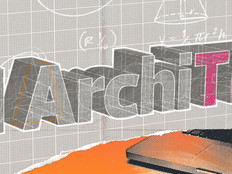Simple Steps Can Pave the Way for Modern Learning
School districts obviously have the greatest freedom to transform classroom spaces when new school buildings are being designed and built. During new construction projects or major renovations, districts aren’t limited by existing classroom footprints or load-bearing walls, but only by their imaginations (and their budgets).
In recent years, districts have frequently used new school construction as an opportunity to improve the energy performance of their buildings, pursue green building certifications such as Leadership in Energy and Environmental Design (LEED), upgrade networking and back-end IT infrastructure, and improve factors such as daylight, airflow and acoustics. District leaders should also take this opportunity to seriously rethink the design of both classrooms and common spaces, as decisions made today will help inform student instruction for decades.
In districts where major construction projects are not on the horizon, leaders have another opportunity: the ability to experiment with learning environment designs a little at a time, allowing teachers, students and district leaders to come to a consensus on what works best for their needs.
SIGN UP: Get more news from the EdTech newsletter in your inbox every two weeks!
Experiment with Modernized Learning First
Often, the effects of the modern learning environment are felt first in common areas such as libraries and media centers. The advent of digital resources and e-books has meant that many schools are reducing their inventory of physical books, freeing up square footage where school leaders can pilot new furniture, devices and audiovisual tools.
Over time, school leaders will want to extend these features into individual classrooms, so that technology and collaboration become embedded into the school day, as opposed to being special features reserved for visits to the school library. But even then, schools might choose to start out small, implementing new design features in the classrooms of a select few teachers. Often, these will be staffers who have agreed to aggressively integrate the new tools into their curriculum and attend outside training sessions to learn how to maximize the impact of their new resources.
This early adopter model, in which other teachers become excited by — and, at times, even jealous of — their colleagues’ new spaces and digital tools, often proves more effective at encouraging adoption of IT initiatives than a mandate from above.
Ask Questions to Shape the Classroom
Because the modern learning environment represents such a massive transformation, it is important for leadership teams to ask probing questions at every stage of the process. For example, if it is determined that students should all have access to connected devices, districts must then decide whether BYOD, one-to-one or another model will work best and why. Other important device-related questions that leadership teams should ask include:
- How will student devices be charged?
- Will there be times when students aren’t allowed to use their devices? How will this policy be enforced?
- What apps will students need to use their devices effectively? Are there funds budgeted for these apps?
- In one-to-one environments, will students be permitted to take devices home with them? Will they be expected to use them to complete homework? How will the district accommodate students who lack connectivity at home?
- How will devices be monitored and managed?
- Is the district’s IT network robust enough to accommodate the traffic resulting from students in every classroom attempting to access online resources at once?
- Do existing wireless resources support the density that will result from 30 students in a single classroom attempting to connect to a wireless access point?
Similar questions should be asked about investments in audiovisual tools and flexible furniture. For example, buying interactive whiteboards or multitouch digital displays is a potentially transformative investment, but it is also a costly one. Before authorizing such a purchase, district leaders should ensure that all academic departments across all grade levels have had a chance to provide input on how such a tool would elevate instruction. If a district’s high school English and history teachers aren’t sure how they would use these displays, for example — or if their plans involve merely replicating pen-and-paper processes in a digital format — then perhaps the initiative should be reconsidered.
Flexible furniture is a more universally intuitive solution, but district leaders should know before making an investment what sorts of learning activities each configuration will support.
Asking these questions before attempting to make big changes can help the modern learning environment truly transform learning, rather than becoming an expensive initiative that goes half-fulfilled.
For more information on the benefits of modernizing the classroom, take a look at the CDW whitepaper, "A Modern Learning Environment."







